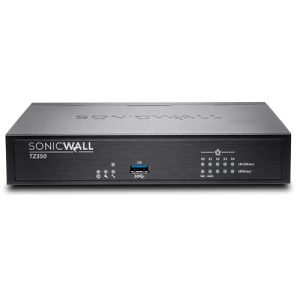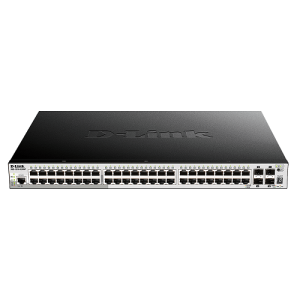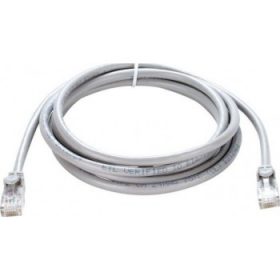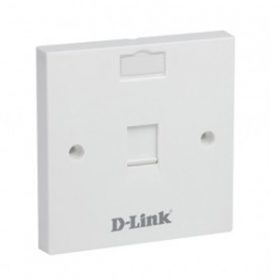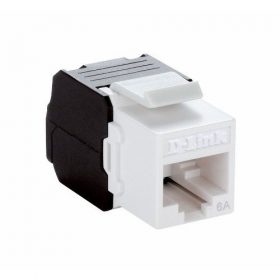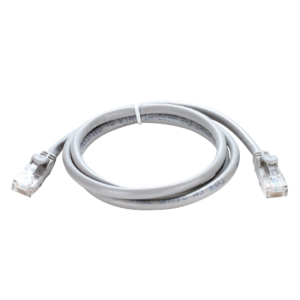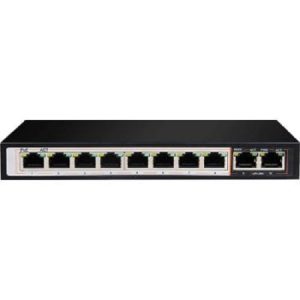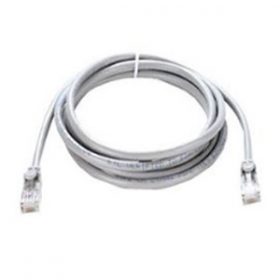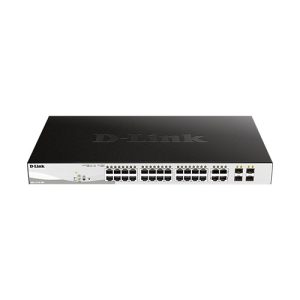General features
|
Hardware
|
|
|
Processor
|
• MT7621DAT (880MHz, dual core)
|
|
RAM
|
• 128MB, DDR3
|
|
Flash
|
• 128MB, NAND
|
|
Interfaces
|
• 10/100/1000BASE-T WAN port
• 4 10/100/1000BASE-T LAN ports
• USB 2.0 port
• USB 3.0 port
|
|
LEDs
|
• Power
• Internet
• WLAN 2.4G
• WLAN 5G
|
|
Buttons
|
• POWER button to power on/power off
• RESET button to restore factory default settings
• WPS button to set up wireless connection and enable/disable wireless network
|
|
Antenna
|
• Four external non-detachable antennas (5dBi gain)
|
|
MIMO
|
• 4 x 4, MU-MIMO
|
|
Power connector
|
• Power input connector (DC)
|
|
Software
|
|
|
WAN connection types
|
• Mobile Internet (via supported USB modem)
• PPPoE
• IPv6 PPPoE
• PPPoE Dual Stack
• Static IPv4 / Dynamic IPv4
• Static IPv6 / Dynamic IPv6
• PPPoE + Static IP (PPPoE Dual Access)
• PPPoE + Dynamic IP (PPPoE Dual Access)
• PPTP/L2TP + Static IP
• PPTP/L2TP + Dynamic IP
• L2TP Dual Stack
• IPIP6 in DSLite mode
• 6in4
• 6to4
• 6rd
|
|
Network functions
|
• DHCP server/relay
• Advanced configuration of built-in DHCP server
• Stateful/Stateless mode for IPv6 address assignment, IPv6 prefix delegation
• Automatic obtainment of LAN IP address (for access point/repeater/client modes)
• DNS relay
• Dynamic DNS
• Static IPv4/IPv6 routing
• IGMP/MLD Proxy
• RIP
• Support of UPnP IGD
• Support of VLAN
• WAN ping respond
• Support of SIP ALG
• Support of RTSP
• WAN failover
• LAN/WAN conversion
• Multi-WAN support
• Autonegotiation of speed, duplex mode, and flow control/Manual speed and duplex mode setup for each Ethernet port
• Built-in UDPXY application
• XUPNPD plug-in
• Equal load distribution while using several WAN connections (traffic balancing)
• Support of VRRP
• Port mirroring
|
|
Firewall functions
|
• Network Address Translation (NAT)
• Stateful Packet Inspection (SPI)
• IPv4/IPv6 filter
• MAC filter
• URL filter
• Ad blocking function
• DMZ
• Virtual servers
• Built-in Yandex.DNS web content filtering service
• Built-in SkyDNS web content filtering service
|
|
VPN
|
• IPsec/PPTP/L2TP/PPPoE pass-through
• PPTP/L2TP servers
• PPTP/L2TP tunnels
• L2TP over IPsec
• GRE/EoGRE/EoIP/IPIP tunnels
• IPsec tunnels
– Transport/Tunnel mode
– IKEv1/IKEv2 support
– DES encryption
– NAT Traversal
– Support of DPD (Keep-alive for VPN tunnels)
|
|
USB interface functions
|
• USB modem
– Auto connection to available type of supported network (4G/3G/2G)
– Auto configuration of connection upon plugging in USB modem
– Enabling/disabling PIN code check, changing PIN code1
– Sending/receiving/reading/removing SMS messages1
– Support of USSD requests1
• USB storage
– File browser
– Print server
– Access to storage via accounts
– Built-in Samba/FTP/DLNA server
– Built-in Transmission torrent client; uploading/downloading files from/to USB storage
|
|
Management and monitoring
|
• Local and remote access to settings through SSH/TELNET/WEB (HTTP/HTTPS)
• Multilingual web-based interface for configuration and management
• Support of D-Link Assistant application for Android and iPhone smartphones
• Notification on connection problems and auto redirect to settings
• Firmware update via web-based interface
• Automatic notification on new firmware version
• Saving/restoring configuration to/from file
• Support of logging to remote host/connected USB storage
• Automatic synchronization of system time with NTP server and manual time/date setup
• Ping utility
• Traceroute utility
• TR-069 client
• SNMP agent
• Schedules for rules and settings of firewall, automatic reboot, and enabling/disabling wireless network and Wi-Fi filter
• Automatic upload of configuration file from ISP’s server (Auto Provision)
|
|
Wireless Module Parameters
|
|
|
Standards
|
• IEEE 802.11a/n/ac
• IEEE 802.11b/g/n
• IEEE 802.11k/v
|
|
Frequency range
The frequency range depends upon the radio frequency regulations applied in your country
|
• 2400 ~ 2483.5MHz
• 5150 ~ 5350MHz
• 5650 ~ 5850MHz
|
|
Wireless connection security
|
• WEP
• WPA/WPA2 (Personal/Enterprise)
• WPA3 (Personal)
• МАС filter
• WPS (PBC/PIN)
|
|
Advanced functions
|
• Support of client mode
• WMM (Wi-Fi QoS)
• Information on connected Wi-Fi clients
• Advanced settings
• Smart adjustment of Wi-Fi clients
• Guest Wi-Fi / support of MBSSID
• Periodic scan of channels, automatic switch to least loaded channel
• Support of 5GHz TX Beamforming
• Wider bandwidth (up to 160MHz)
• Autonegotiation of channel bandwidth in accordance with environment conditions (20/40 Coexistence)
• Support of STBC
|
|
Wireless connection rate
|
• IEEE 802.11a: 6, 9, 12, 18, 24, 36, 48, and 54Mbps
• IEEE 802.11b: 1, 2, 5.5, and 11Mbps
• IEEE 802.11g: 6, 9, 12, 18, 24, 36, 48, and 54Mbps
• IEEE 802.11n (2.4GHz): from 6.5 to 300Mbps (from MCS0 to MCS15)
• IEEE 802.11n (5GHz): from 6.5 to 600Mbps (from MCS0 to MCS30)
• IEEE 802.11ac (5GHz): from 6.5 to 1733Mbps (from MCS0 to MCS9)
|
|
Transmitter output power
The maximum value of the transmitter output power depends upon the radio frequency regulations applied in your country
|
• 802.11a (typical at room temperature 25 °C)
15dBm
• 802.11b (typical at room temperature 25 °C)
15dBm
• 802.11g (typical at room temperature 25 °C)
15dBm
• 802.11n (typical at room temperature 25 °C)
2.4/5GHz
15dBm
• 802.11ac (typical at room temperature 25 °C)
15dBm
|
|
Receiver sensitivity
|
• 802.11a (typical at PER < 10% (1000-byte PDUs) at room temperature 25 °C)
-93.5dBm
• 802.11b (typical at PER = 8% (1000-byte PDUs) at room temperature 25 °C)
-97dBm
• 802.11g (typical at PER < 10% (1000-byte PDUs) at room temperature 25 °C)
-77dBm
• 802.11n (typical at PER = 10% (1000-byte PDUs) at room temperature 25 °C)
2.4GHz
-72dBm
5GHz
-70.5dBm
• 802.11ac (typical at PER = 10% (1000-byte PDUs) at room temperature 25 °C)
-60.5dBm
|
|
Modulation schemes
|
• 802.11a: BPSK, QPSK, 16QAM, 64QAM with OFDM
• 802.11b: DQPSK, DBPSK, DSSS, CCK
• 802.11g: BPSK, QPSK, 16QAM, 64QAM with OFDM
• 802.11n: BPSK, QPSK, 16QAM, 64QAM, 256QAM with OFDM
• 802.11ac: BPSK, QPSK, 16QAM, 64QAM, up to 256QAM with OFDM
|
|
Physical Parameters
|
|
|
Dimensions (L x W x H)
|
• 132 x 205 x 36 mm (5.19 x 8.07 x 1.4 in)
|
|
Weight
|
• 340 g (0.75 lb)
|
|
Operating Environment
|
|
|
Power
|
• Output: 12V DC, 2A
|
|
Temperature
|
• Operating: from 0 to 40 °C
• Storage: from -20 to 65 °C
|
|
Humidity
|
• Operating: from 10% to 90% (non-condensing)
• Storage: from 5% to 95% (non-condensing)
|
|
Delivery Package
|
|
|
• Router DIR-2150
• Power adapter DC 12V/2A
• Ethernet cable
• “Quick Installation Guide” (brochure)
|
|
|
Supported USB modems2
|
|
|
GSM
|
• Alcatel X500
• D-Link DWM-152C1
• D-Link DWM-156A6
• D-Link DWM-156A7
• D-Link DWM 156A8
• D-Link DWM-156C1
• D-Link DWM-157B1
• D-Link DWM-157B1 (Velcom)
• D-Link DWM-158D1
• D-Link DWR-710
• Huawei E150
• Huawei E1550
• Huawei E156G
• Huawei E160G
• Huawei E169G
• Huawei E171
• Huawei E173 (Megafon)
• Huawei E220
• Huawei E3131 (MTS 420S)
• Huawei E352 (Megafon)
• Huawei E3531
• Prolink PHS600
• Prolink PHS901
• ZTE MF112
• ZTE MF192
• ZTE MF626
• ZTE MF627
• ZTE MF652
• ZTE MF667
• ZTE MF668
• ZTE MF752
|
|
LTE
|
• Alcatel IK40V
• D-Link DWM-222
• Huawei E3131
• Huawei E3272
• Huawei E3351
• Huawei E3372s
• Huawei E3372h-153
• Huawei E3272
• Huawei E367
• Huawei E392
• Megafon M100-1
• Megafon M100-2
• Megafon M100-3
• Megafon M100-4
• Megafon M150-1
• Megafon M150-2
• Quanta 1K6E (Beeline 1K6E)
• MTS 824F
• MTS 827F
• Yota LU-150
• Yota WLTUBA-107
• ZTE MF823
• ZTE MF823D
• ZTE MF827
• ZTE MF833T
• ZTE MF833V
|
|
Smartphones in USB tethering mode
|
• Some models of Android smartphones
|


